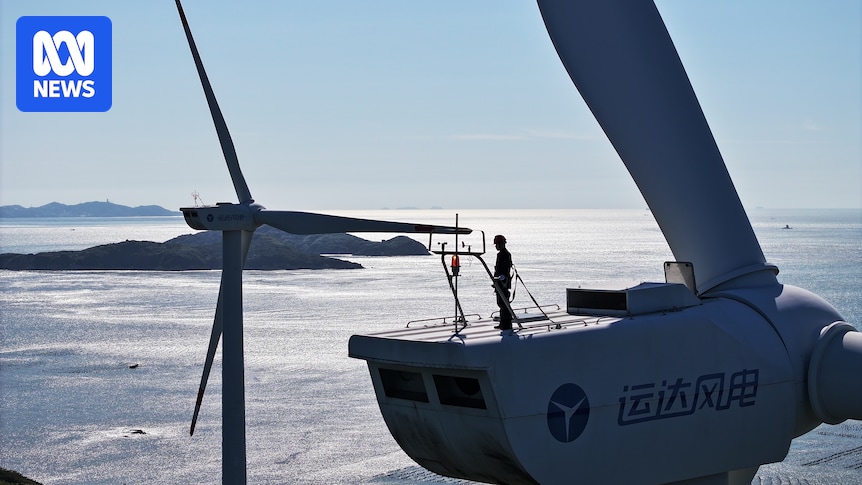
Ten years ago, in the aftermath of the Paris terror attacks and the political shift in Australia with Malcolm Turnbull’s rise to power, a significant global event took place. Scientists, diplomats, and world leaders gathered in Le Bourget, a northern suburb of Paris, to forge a landmark accord aimed at combating climate change. Known as the Paris Agreement, it was signed by 195 countries, marking the first global commitment to prevent catastrophic global warming caused by fossil fuel emissions.
“It was euphoric,” reflects Erwin Jackson, a leading climate policy expert and Head of Australian Programs at Monash University’s Climateworks Centre. “For the first time, all countries across the world had come together to agree on a new path forward on climate action for the world. And critically, it wasn’t just governments; it was business, investors, unions, and civil society all getting behind it.”
Progress and Setbacks: A Decade Later
The Paris Agreement aimed to change the trajectory of global warming, and in some respects, it has succeeded. In 2015, projections indicated a potential rise of up to 4 degrees Celsius by 2100. Today, that figure has been adjusted to between 2.3C and 2.8C, which, while still dangerously high, represents a significant improvement.
However, the latest UN Emissions Gap Report warns that the goal of limiting warming to 1.5C above pre-industrial levels might be breached within the next decade.
“Scientists tell us that a temporary overshoot above 1.5C is now inevitable — starting, at the latest, in the early 2030s,” UN Secretary General Antonio Guterres stated. “And the path to a liveable future gets steeper by the day, but this is no reason to surrender.”
Former Australian Prime Minister Malcolm Turnbull, present at the historic COP in Paris, acknowledges the agreement’s shortcomings but remains optimistic. “We haven’t been able to cut emissions to keep warming to 2C, let alone to 1.5C,” he admits. “Would we have been worse off if Paris had not been agreed to? Yes, we would be a lot worse off.”
The Role of China and Renewables
Back in 2009, at the COP in Copenhagen, negotiations collapsed without a global agreement, a stark contrast to the success in Paris. A critical lesson learned was the necessity of engaging China, the world’s largest emitter alongside the United States. Former President Barack Obama emphasized this in his reflections, noting that securing China’s participation was crucial for the agreement’s resilience.
China’s involvement has been pivotal, not just as a major emitter but as a leader in renewable energy technology development. Over the past decade, China has driven down the costs of solar, wind, batteries, and electric vehicles, making clean energy technologies more accessible globally.
“The vast industrial efficiency of the Chinese manufacturing system has resulted in clean energy technologies becoming much cheaper than they had been hitherto and available to the whole world,” Turnbull explains.
Renewable energy has exceeded expectations, with solar capacity being installed at 15 times the rate predicted by the International Energy Agency in 2015. Today, renewable energy accounts for 40 percent of global electricity generation, surpassing forecasts.
Challenges and Future Directions
Despite the growth in renewables, global emissions remain high, driven by increased electricity consumption. Economic losses from natural disasters have also escalated, with 2024 seeing $417 billion in losses, highlighting the urgent need for climate action. Attribution science has advanced, allowing scientists to rapidly assess the impact of climate change on extreme weather events.
The Paris Agreement’s framework, requiring countries to submit increasingly ambitious climate targets, known as Nationally Determined Contributions (NDCs), every five years, remains crucial. However, there is a gap between pledges and the actions needed to meet the agreement’s objectives. Over-reliance on carbon removal through land use, such as large-scale tree planting, poses additional challenges.
Erwin Jackson emphasizes the importance of understanding net zero, which means balancing emitted carbon with the amount absorbed by the atmosphere.
“If you’re going to stabilise the climate at any level, you have to achieve net zero emissions,” Jackson asserts. “It’s a scientific imperative.”
As COP30 unfolds, the world reflects on the progress and challenges of the past decade. While the Paris Agreement marked a turning point in climate diplomacy, it is not a panacea. The path forward requires continued global cooperation, innovation, and commitment to achieving net zero by 2050.





